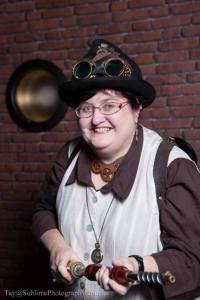There has been an interesting trend in literary media in the past few years. Villains are no longer allowed to have a simple motive like “I want to rule the world” or “I will revenge myself on everyone”. Villains are now shown to see themselves as the good guys; which only makes sense, when you think about it. A villain who is a human being should be a mixture of good and bad traits. It is the conflict this mixture creates that makes a villain interesting.
Think about the greatest villain to come out of the movies in the past fifty years: Darth Vader. When we first meet him, he is just tall, dark and menacing. As the series progressed, we learnt more about him. In fact, I would argue that the six Star Wars movies are more about Darth Vader than they are about anyone else, since he is a central character in all six. What makes Darth Vader/Anakin so interesting? We all know he has a kernel of good in him, and that in the end it is the good in him that wins out.
Disney is right on trend with Maleficent. With that movie, we are given a much deeper look at one of the greatest Villains in the Disney catalogue. This retcon of the original story has our wicked fairy as simply misunderstood, rather than evil to the core. The same thing happened to Frozen, with our Snow Queen no longer a villain but now an anti-hero. I actually like Frozen and Maleficent for presenting us with female hero/anti-hero duos at the centre of these stories, even though I was disappointed with the way the real story of Han Christian Anderson’s Snow Queen was completely obliterated in Frozen. (I would still love to see a Disney version of the Snow Queen.) Their complexity of characterization made the ‘villains’ more interesting than the heroes.
For some reason, storytellers feel they can give their villains some redeeming qualities (which makes their downfall also a tragedy), but won’t give their heroes a few flaws. This is why we all love Marvel’s Loki even though we want Thor to win (and save the world). Thor – as a character in the Marvel universe – isn’t as interesting as Loki. They’ve tried to make him more ‘human’ by giving him a human love interest, but he is still a much less complicated character than Loki. And even while we are cheering when the Hulk is waving Loki around like a flag, even after he has torn our hearts out by killing Agent Coulson, we still feel sympathy for this character. Thor is white bread; Loki is a fruit and nut loaf. I don’t know about you, but I prefer texture and flavour over blandness.
So, do you find that your villains are more interesting than your heroes? How can we fix that? Most Young Adult Fiction overcomes this by have an angst-ridden loner as the protagonist of the story. And another way is to give your protagonist a few realistic flaws. Something a bit more interesting than biting her biting her nails or having fly-away hair. You have to avoid giving the protagonist ‘flaws’ that are actually virtues-in-disguise, because a savvy reader will pick up on that. (And aren’t all your readers intelligent individuals with excellent taste? Of course they are.)
Look at Sherlock Holmes and his current popularity (not that he is ever really unpopular). Sherlock is seriously flawed. No one likes a smartass, and that is what Sherlock is. In fact, if you were to list his characteristics, you would find a lot of them make him an excellent candidate for being a villain … look to his willingness to bend the truth and break the law on behalf of a client, often lying to the police, concealing evidence, manipulating emotions of bystanders, or breaking into houses. He redeems himself by being completely committed to his clients, and by the warmth of his friendship with Doctor Watson.
So, don’t be afraid to give your protagonist some really serious personality flaws, so long as they aren’t repellent like cruelty to animals or setting fires in nursing homes. Not only will she have to battle the villain, but her own nature. By overcoming both, she will win not only the battle, but the hearts of your audience.





